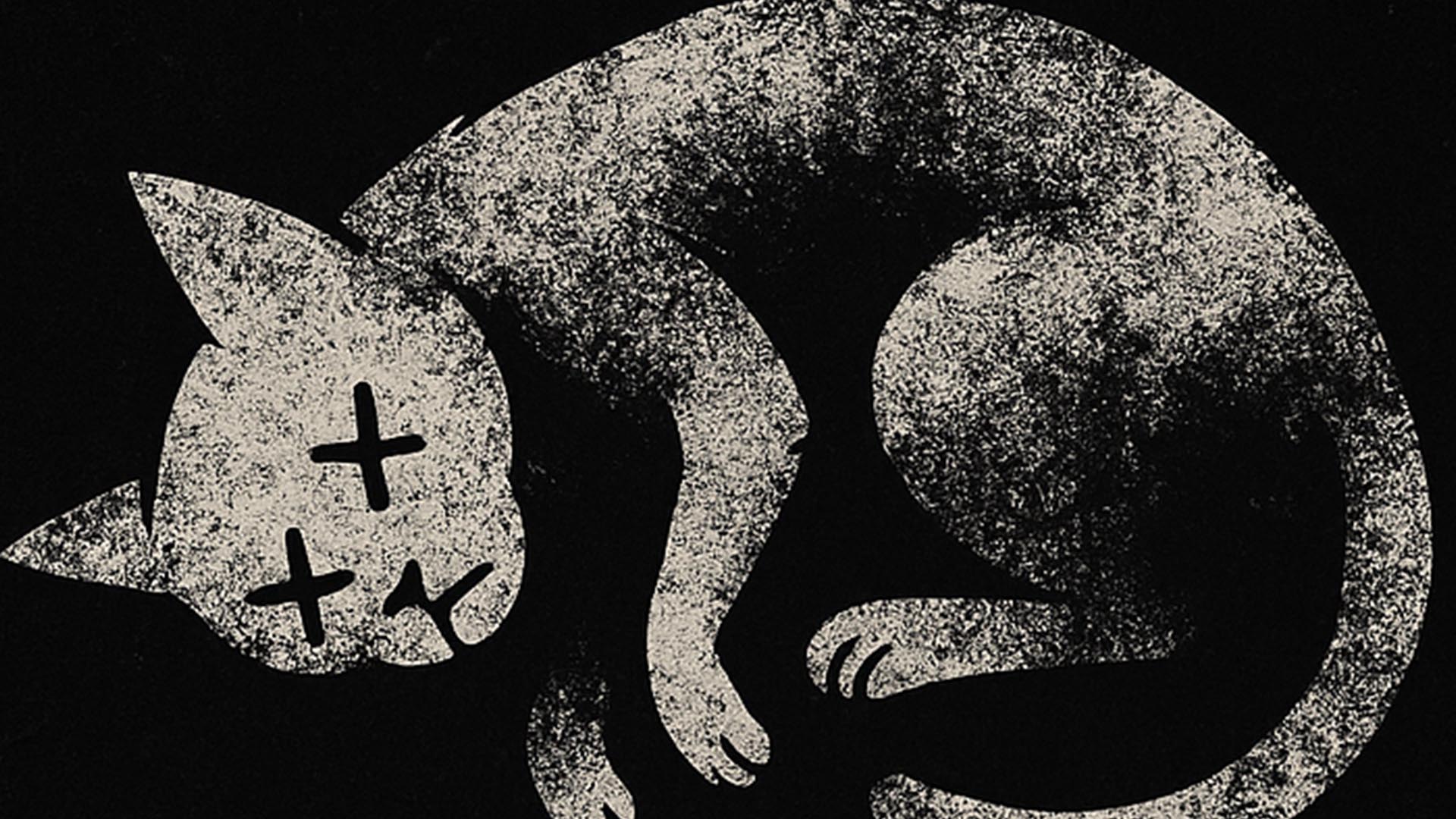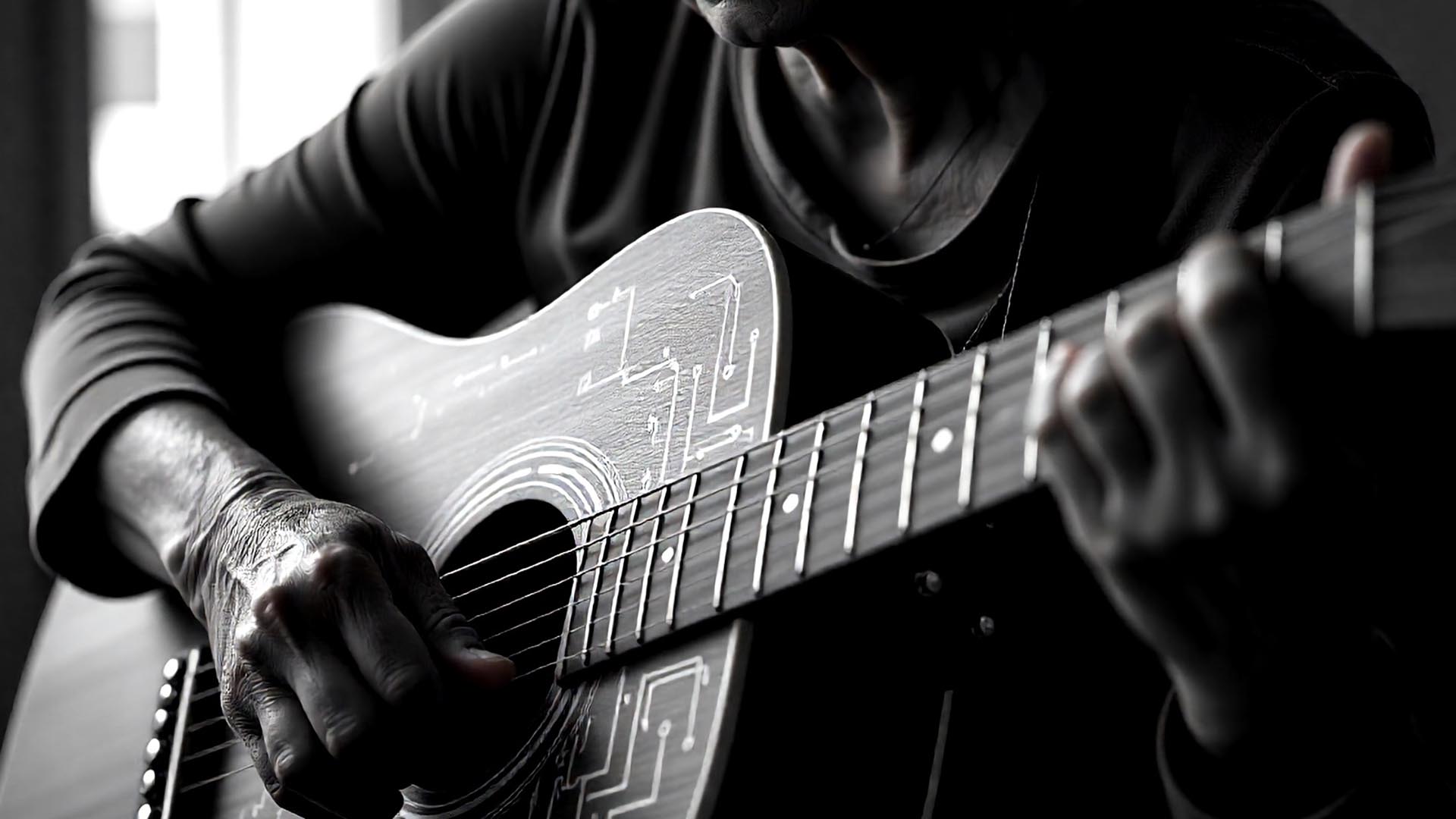Your cart is currently empty!
Category: Stories
-

Celebrating our first 50
Nine Lives Lost is celebrating a big milestone: the release of 50 songs in the Songs for Strays set, now available as a free download. The entire collection can be used, shared, covered, remixed or adapted however you like, as long as Nine Lives Lost is acknowledged in the process. It’s less about ownership and more about letting the songs live beyond their original form, passed between friends, played around campfires, reimagined in new voices and styles.
You can grab the full set here:
https://nineliveslost.com/downloads/Songs-For-Strays.zip.Whether you’re just listening through or planning to make something with them, we hope the songs find a home with you, and if they spark something creative, even better.
-

Conflicted About AI in Music
I have to admit that I am a little conflicted about the use of AI in making music. Part of me feels it is a step away from the traditional path of learning an instrument, spending years improving your craft, and then expressing yourself through the notes you play. That process has always been central to what many people see as the “real” way to make music. At the same time, I know that whether AI belongs in music depends on your goal, your motivation, and what you are trying to achieve.
For me, my main focus has always been on writing about my experiences. I put a lot of effort into shaping words so they tell the story I want to tell. I spend time reworking lines so they create an image that someone else might recognise, so that they connect with me in that moment of shared feeling. That is where my energy naturally flows.
I am very much a campfire player. While I would love to spend more time becoming a better musician, learning theory, and building stronger skills on the guitar, right now my purpose is simpler. I want to tell stories and share my experiences through song. I do write the music and create the basic structures, but when it comes to shaping the production into something that feels complete, I rely on AI. It helps me present the song in a way that I could not achieve on my own.
The way I currently see it, all forms of art are really just a function applied to a medium. A painter uses paint and canvas to capture their vision. A poet arranges words on paper to communicate a feeling or idea. The medium can be very important, but it is not the essence of the art. What matters most is the act of expression and the story being told. For me, AI has become the paper on which I write my music. It is simply the medium I use right now to put my feelings into a form I can share.
I do not know if I will always see it this way. My relationship with AI and music may evolve. One day I might lean less on technology and rely more on my own musicianship. For now though, this is how it works for me.
Some people will love it and others will hate it, and that is their choice. I have chosen to accept it, at least for the moment.
-

Why an AI Band and no persona?
We write songs because the stories won’t leave us alone. They start as sketches sitting on the bed, voice, guitar, a pulse of an idea, and then ask for a different skin. Instead of forcing every song through one fixed singer or “AI persona,” we treat our AI tools like a rotating band of guest musicians. Each track gets the voice, tone, and production that best serves the story.
No fixed persona = more honest songs
A single, branded voice can be tidy for marketing, but it boxes the music in. Our songs wander across moods, alt-folk one day, indie rock the next, cinematic ballad after that. Locking into one timbre would make some stories feel false. With an AI band, we can “cast” the right vocalist for each narrative, the same way films cast actors for roles. The result feels more truthful: the performance fits the lyric instead of the lyric bending to a fixed voice.
“Guest vocalist” flexibility on every track
Think of it as an open-door studio session:
- Character match: We pick vocal color (age, grit, warmth, air) to mirror the narrator’s point of view.
- Genre fluency: Voices shift naturally with arrangement—whispery for folk, chesty and forward for rock, intimate for confessional pieces.
- Dynamic range: Some songs need restraint; others beg for a lift and edge. We select phrasing and power to fit the arc.
- Iteration without ego: We can try multiple ideas quickly and keep the one that best serves the song—no one’s identity is on the line.
Our process: from acoustic seed to finished track
- Write the story
Lyric first culture. Melody and chord bed come from simple acoustic takes—enough to prove the song stands on its own. - Define the role of the voice
Who’s speaking? Tender confessor, weary traveler, hopeful fighter? We write a short “character brief.” - Cast the vocalist
We audition AI vocal profiles against the brief, testing diction, grain, vibrato, and emotional lift on key lines (usually chorus first). - Direct the performance
We guide phrasing, emphasis, breaths, and timing to land the emotional beats. Micro-edits keep humanity—tiny imperfections, not clinical perfection. - Arrange around the truth
Instruments and production support the vocal: keep the acoustic heart, then layer rhythm, texture, and space to elevate the narrative. - Quality pass & transparency
Final checks for clarity, translation to different speakers, and a note about how AI was used. The writing is always ours; the vocal is a tool we play.
What stays consistent (even when the voice changes)
- Songwriting DNA: Our melodic shapes, turns of phrase, and recurring themes tie everything together.
- Acoustic backbone: Most tracks begin on guitar/piano and keep that core, even when the production grows.
- Story-first decisions: If an idea sounds cool but weakens the lyric, it goes.
Why this matters to listeners
- Variety without whiplash: You’ll hear a fresh vocal character where it makes sense, not change for the sake of novelty.
- Clearer storytelling: The “right” voice illuminates the lyric. You shouldn’t have to fight the timbre to feel the meaning.
- Discovery: Different textures invite repeat listens. The song you loved for the hook might reveal a new layer through the delivery.
What about “finding our sound”?
We may eventually settle into a tighter palette of voices and production colors. Right now, we’re deliberately exploring, turning acoustic concepts into something new and letting each song tell us what it needs. When patterns emerge naturally, we’ll honor them. Until then, curiosity leads.
Ethics & authorship
We’re transparent about our use of AI. We write the songs, shape the performances, and craft the productions. The AI vocalist is an instrument, powerful, flexible, and directed by human choice. The goal isn’t to fool anyone; it’s to serve the music.
Quick answers
- Does AI replace humans for us? No. It expands our creative options. We still collaborate with real musicians and are open to human guest vocals.
- Why not just pick one AI persona? Because different stories deserve different voices. A fixed persona would be a shortcut that costs truth.
- Will you perform live? Yes—live arrangements will feature human performers. The “guest vocalist” idea can carry over with session singers.
Nine Lives Lost is about songs, not a mascot. An AI band lets us cast the right voice every time, keep our acoustic heart, and transform ideas without losing the thread. If you hear a different singer on the next track, that’s the point, the story asked for them.
-

Why Oh Why?
I’ve been writing songs for years, most of them bad, and only managed to get three mostly finished. Along the way I’ve collected heaps of scratchy acoustic recordings that never really went anywhere.
A few months ago, I started experimenting with AI to turn some of those rough demos into something a little more shareable. In what will probably end up being a very embarrassing move, I’ve uploaded the first 35 of them to my site. There are still more to go. Each one has a bit of background and the lyrics, and I’ll add the chords soon.
Why am I doing this? Honestly, I don’t really know. What do I hope to achieve? I’m not sure about that either. Maybe it’s just about finally getting them out into the world instead of letting them sit unfinished on a hard drive. The long term goal is to find the best songs and actually make them end-to-end. Not sure if or when that might happen.
They’re all pretty personal, circling around a few recurring themes that keep showing up in my writing. From time to time, I might post one here as well. If you see that cat “Church,” you’ll know it’s another Nine Lives Lost post sneaking into your feed. And just for the record, don’t blame AI for the chord progressions. I’ve always used pretty standard progressions in pretty standard keys.
If you’re curious about how I’m actually using AI in the process, the AI page explains it in more detail.
-

Why?
Nine Lives Lost is a bit of a paradox for me. I’m not entirely sure why I keep doing it, but I do. At the heart of it, it’s really about the writing—getting something out of my head and onto paper. The music comes after that, the words always take the lead. Yes, we make demos, but the words are the driving force. They’re the core of the song, the part that I want to share.
We’ve had to lean on AI to help package everything up because, frankly, studio time is beyond our reach. Plus, I know I don’t have the voice to pull off some of the songs as I envision them. We’ve got songs that are end-to-end traditional, but truthfully, I don’t connect with them as much as I do the tracks produced with AI. Don’t get me wrong, making music with AI is no walk in the park—it’s still a lot of work. And even then, you only get 80-90% of what you’re trying to achieve. But it’s enough to move the project forward.
What’s exciting now is that we’re starting to blend the AI-produced tracks with real vocals and instruments, something that feels a bit more like a true collaboration between man and machine. AI has given me a tool that I never had before. In the past ten years, I’ve completed three songs, accumulated hundreds of concepts, and filled up countless notebooks. Before AI, that’s all I had—ideas in my head and a lot of scribbled notes.
I’d love for making music to be my full-time job, but it isn’t. I write when I can, and I do the best with what I have. I don’t claim to be a musician, but I still have something to say. I hope that someone out there finds something of value in the stories I’m sharing through my music. If even one person connects with a line, a melody, or a feeling, it makes it all worth it.
-

GT Or Not GT?
A peek inside how Nine Lives Lost uses AI to prototype real human stories through music.
Let’s get one thing straight: the heart of our music has always been human.
At Nine Lives Lost, every lyric we write, every story we tell, and every chord we strum starts in the real world — with lived experiences, personal moments, and that undeniable need to say something that matters. But getting those stories from a half-sung demo into a full track that people can hear? That takes time, money, space, and a full band’s worth of gear we don’t always have lying around.
That’s where GT — generative technology — comes in.
We don’t use AI to write our songs. We don’t ask it to guess what we’re feeling. What we do is take our raw material — hand-written lyrics, simple guitar or keyboard demos — and use AI production tools to shape them into working prototypes. These aren’t final tracks. They’re sketches. Test runs. Early blueprints. A way for us to hear what a full arrangement might sound like without booking a studio or wrangling five players.
The Process
Our process is simple but intentional:
- We write all the lyrics ourselves — always. This project is about the things we want to say. The focus, emotion and tone are 100% human and based on our experience or thoughts on a subject.
- We produce a rough demo or record light acoustic or keyboard demos to lock in rhythm and pace.
- Then we feed those bones into AI tools that help shape instrumental production and basic arrangement.
- We maintain tight control over the tone, rhythm, pace, and emotional atmosphere.
- The vocal melodies are guided by us, but often nudged by AI — it sometimes surprises us in good ways.
- We sometimes add real instruments or vocals to the prototypes.
- If a prototype resonates, we will aim to re-record it ourselves or with live musicians at some point in the future.
The end result? A collection of demo-level tracks that sound far more polished than they have any right to — giving us the space to test ideas, try alternate moods, and build our sound without burning out.
Why We Do It
We’re not trying to trick anyone. The tracks we release using AI are labeled as such and will never be the final version if they end up meaning something to us — or to you. They are a means to stay creative, not a replacement for real musicianship.
In a world where most independent artists are juggling full-time jobs, families, and rent, AI is a compromise — not a shortcut. It helps small teams like ours get further down the track (pun intended) without giving up what matters: the story, the soul, the honesty.
And that’s the thing — we let AI assist, but never lead. Every Nine Lives Lost song is born from truth. Every lyric is real. Every melody starts with a moment we lived. What GT gives us is the ability to keep moving forward even when the resources aren’t there. And sometimes, if we’re lucky, it even surprises us with something we didn’t expect — and wouldn’t have tried on our own.
So… GT or not GT?
We say: GT, but only with heart. Only when it serves the story. Only when it helps humans be more human.That’s the Nine Lives Lost way.
-

Sharing is caring
It started with a borrowed guitar and a restless heart. The first chords I strummed were rough, unpolished, but they carried something I couldn’t put into words—a longing, a search for something both deeply personal and universally understood.
I never set out to write alternative folk music; it found me in the quiet moments, in the spaces between conversations, in the echoes of old stories passed down. The songs weren’t just mine—they felt like they belonged to the open road, the midnight thinkers, the ones searching for a sound that felt like home.
That’s when I realized something: music isn’t meant to be owned. It’s meant to be lived in. The songs I wrote weren’t just for me; they were for anyone who needed them, anyone who could take them and shape them into their own stories.
So I started sharing—not just the recordings, but the chords, the lyrics, the space for others to step in and make the music their own. Because a song isn’t alive until someone else sings it back to you.
And that’s why I do this—why I write, why I share, why I let the music go. Because in the end, the best songs aren’t the ones that belong to a single voice. They’re the ones that belong to everyone.
